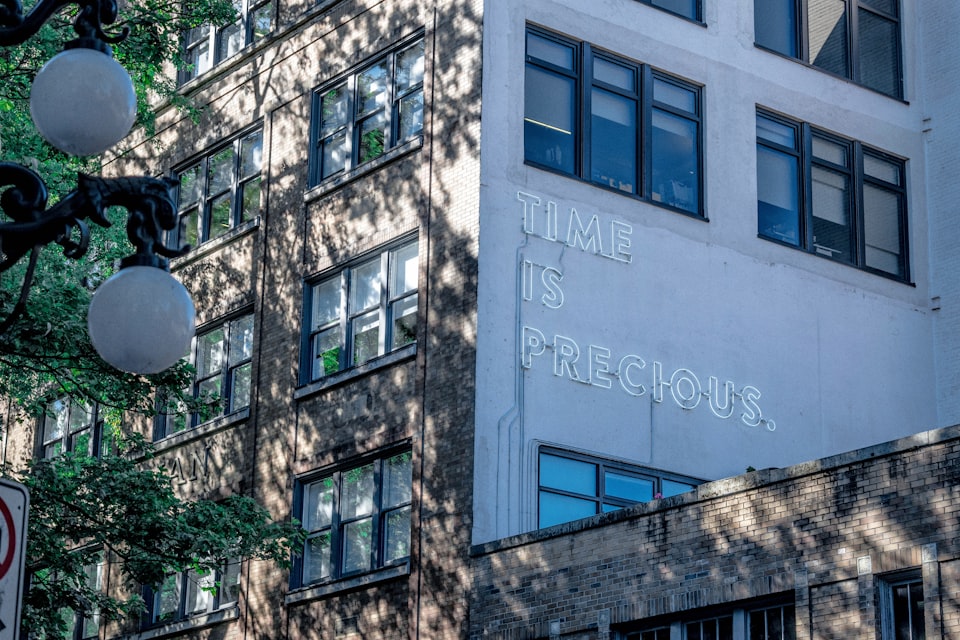The Life-Changing Magic of Monotasking

Multitasking isn’t everything it’s cracked up to be.
While a mainstay of job listing for decades, it turns out that the ability to “multitask” is less about being able to work on two or more things at the same time, and more an exercise in futility as we switch between different tasks while not giving our full attention to any of them.
There has to be, as they say, a better way. The opposite of multitasking, monotasking helps to increase our creativity, energy, and focus by giving our full attention to the task at hand. Far from an admission of defeat, in today’s fast-paced world it could be argued that monotasking is the only way any of us are able to get anything done.
In this article I’m going to dig into why monotasking, not multitasking, is the secret to getting ahead in life and work, the dangers of context switching when trying to achieve deep work, and the five steps that you can take right now to start monotasking today.
Let’s dive in and discover, in an ode to Marie Kondo, the life-changing magic of monotasking.
What is Monotasking?
Monotasking, also referred to as single tasking, is the act of working on one task at a time, instead of attempting to work on multiple tasks at once.
The benefits of monotasking cannot be overstated. When we multitask, we’re putting tremendous stress on our brains as we flit backwards and forwards between different tasks. In an article for Forbes, Sandra Bond Chapman notes that environments that place a high value on the ability to multitask, including the majority of today’s places of work, are promoting a potentially damaging narrative:
Multitasking is a brain drain that exhausts the mind, zaps cognitive resources and, if left unchecked, condemns us to early mental decline and decreased sharpness. Chronic multitaskers also have increased levels of cortisol, the stress hormone, which can damage the memory region of the brain.
Similarly, Earl Miller, a neuroscientist at the Massachusetts Institute of Technology (MIT) and one of the world experts on divided attention, noted in the Guardian that our brains are not wired for multitasking:
When people think they’re multitasking, they’re actually just switching from one task to another very rapidly. And every time they do, there’s a cognitive cost in doing so.
Monotasking vs. Multitasking
If our brains are not wired for multitasking, then montasking could be the answer to our prayers where it comes to reducing overwork and generally feeling more accomplished in our day to day lives.
In most circumstances and for most people, attempts to multitask often result in a reduction in productivity, as we chug away doing two, three, or even four tasks poorly, as opposed to opting to monotask and do one task to the best of our creative abilities.
This has certainly been true for me. Whenever I’m feeling burned out, I can be all-but certain that the reason for this is an overpacked schedule in which I’m moving from one meeting to the next, snatching ten minutes here and there in which to catch up on emails or attempt to fit some “real work” into my day. In contrast, my most relaxing days are those in which I sit down to focus on one singular task—in my case this often consists of writing articles such as this one—and seeing it through to completion before moving on to something else.
Multitasking splits your attention between multiple tasks at the same time, whereas monotasking focuses on and fully participates in one.
The Dangers of Context Switching
When we describe multitasking we’re often describing context switching, the act of opening up our email and looking through it for “just” two minutes before returning to our original task. Context switching is inherently bad for us—every time we switch between doing our work and reading an article online, or reading an article online and checking our phones, we experience a “transaction cost” that drains our energy and slows us down.
Context switching is inherently dangerous to our ability to do deep work. Cal Newport is a computer science professor at Georgetown University and the author of five books, including Deep Work. According to Newport:
Deep work is the ability to focus without distraction on a cognitively demanding task. It’s a skill that allows you to quickly master complicated information and produce better results in less time. Deep work will make you better at what you do and provide the sense of true fulfillment that comes from craftsmanship.
The “dangers” of context switching aren’t just hypothetical. In an article for The New Yorker, Maria Konnikova spoke with University of Utah professor of psychology David Strayer, who through his research into people who drive while on the phone, was able to demonstrate that drivers who talked on the phone were “at just as high a risk of accidents as intoxicated ones.”
Reaction time slowed, attention decreased to the point where they’d miss more than half the things they’d otherwise see—a billboard or a child by the road, it mattered not.
Strayer’s research took place over the course of a decade ending in 2012, and was limited to people taking phone calls while driving. It did not look at the growing trend of people operating their smartphones—that is, looking at their phone screens, instead of the road—when driving their vehicles.
Five Steps to Start Monotasking Today
So, how can you start monotasking right now in a bid to claw back your creativity, energy, and focus, as well as your ability to do deep work?
Here are five steps that you can take to start monotasking today:
1. Embrace the Pomodoro Technique
Developed by Francesco Cirillo in the 1980s, the Pomodoro Technique breaks down work (or studying, or exercising, or whatever it is you need to do) into short chunks of time, with a brief break in between each. Here’s what it looks like in practice:
- Set your Pomodoro timer for 25 minutes
- Work on your task
- After 25 minutes is up, take a 3-5 minute break
- After 4 pomodoros, take a longer 25-30 minute break
The beauty of the Pomodoro Technique is it gives you permission to take a break from your work on a fixed schedule. I use the Pomodoro Technique in my own work (as I write this I have 7 minutes and 27 seconds left until my next 3-5 minute break) and I have found it to be invaluable in my efforts to focus on just one task at a time.
If 25 minutes is too long for you to remain focused on one task at the beginning of your monotasking journey, start with just 10 or 15 minutes of focused work, and build up to 25 minutes over the span of several focused weeks.
2. Save for Later
If you work online, there’s a good chance that you come across many articles and videos throughout your day that force you to make a decision: Do you stop what you’re doing to start reading or watching the new, exciting piece of content in front of you, or do you choose to keep working on your current task, either bypassing the new, shiny object completely, or keeping it in an open tab with the intention of coming back to it later?
If you’re anything like me, you often opt for the first option, breaking your momentum with your current task.
Instead, I strongly encourage you to start saving these items for later. Whether you choose to make a special bookmarks folder in your internet browser, or you sign up for a free service such as Instapaper or Pocket which make it easy to “clip” an article or video, opting to save these items for later will block these distractions in the present.
3. Make a To-Do List, Break Down Tasks
I’ve written multiple times on the importance of creating a to-do list. In my book on morning routines I encouraged readers to create a to-do list for the following day and place their most important work at the top.
One caveat I should have noted is that to-do lists only work if you work on one task in the list at a time. Working on your first and second most important tasks for the day at the same time isn’t especially helpful, as the creativity, energy, and focus that you will lose by constantly context switching between the two will far outweigh any mystical multitasking benefits you may believe you’re receiving.
It’s also important to ensure that the tasks you are working on are small enough that it is clear what is expected of you in order to cross it off your list. For example, “Launch website” is extremely esoteric, whereas “Write copy for website homepage” has a clear end point.
4. Reduce Clutter in Your Work Life
Clutter is distracting, especially when you’re trying to monotask. While this is certainly true of physical clutter (unless you’re a creative-type who finds inspiration in the mess), I’m referring here to digital clutter.
When I’m working, I silence my phone and reduce the number of notifications that can make it onto my home screen. While I can’t put my phone in another room entirely—I need to be able to be reached during work hours—I find this to be a good compromise whereby I never miss a call, but I’m not distracted by less-important notifications. Similarly, I encourage you to only open your email inbox at designated periods throughout your day, instead of always having it open in the background.
Lastly, one of my favorite “hacks” to encourage monotasking is putting a limit on how many internet browser tabs you can have open at any one time. While you can go this alone; choosing to only have a maximum of three tabs open at a time, for example, most browsers have extensions that can limit this for you by either not allowing you to open a new tab once you’ve hit your limit, or by deleting your least-used tab.
5. Listen to Productivity Music
If there’s one thing that improves my ability to monotask above all else it’s listening to music to improve my productivity, focus, and concentration.
I’ve written a whole article on productivity music that I encourage you to read, so I won’t go into too much detail about this here, but essentially productivity music is any music that fades into the background, allowing you to focus more heavily on your work.
This can consist of classical music, electronic music, and even white noise. Read the article in full for a list of my favorite productivity music, and where to find it.
I hope I’ve convinced you of the life-changing magic of monotasking over its much-celebrated older brother. Try monotasking for just one week and let me know how you get on.
If you’re interested in hearing more from me, be sure to subscribe to my free email newsletter, and if you enjoyed this article, please share it on social media, link to it from your website, or bookmark it so you can come back to it often. ∎



